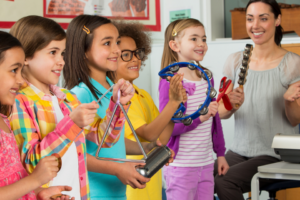
Bubble Wrap and Other Simple Methods for Coping with Stress
 Back in November, in response to a Time magazine cover story, I wrote about the alarming rise of anxiety and mental illness among American youth. Today, we revisit this issue and offer some easy-to-incorporate solutions kids and teens can use for coping with difficult times. Stress can be dealt with through a variety of creative activities, some of which we highlight below.
Back in November, in response to a Time magazine cover story, I wrote about the alarming rise of anxiety and mental illness among American youth. Today, we revisit this issue and offer some easy-to-incorporate solutions kids and teens can use for coping with difficult times. Stress can be dealt with through a variety of creative activities, some of which we highlight below.
Abdominal Breathing: One can begin practicing this as early as age five. Mindful breathing is a great way to alleviate stress and to stay in the moment rather than ruing the past or fretting about the future. Really all you need is a supportive chair and the willingness to be patient and learn how to repeat the sequence of breathing and pay attention to the rise and fall of your abdomen. Oftentimes children and adolescents, when overcome with panic or worry, feel that they cannot get enough air and become worried that they may faint or suffocate. Learning the art of abdominal breathing can be a vital tool for coping with the stresses that are inherent in growing up. For tips on how to train young people for this coping skill, click HERE.
Punching Pillow/Bubble Wrap: Yes, a pillow and bubble wrap: believe or not, these two common items can come in handy for when you need to release pent-up feelings. Young people in particular are prone to hold in stress, not wanting to appear weak or immature. Furthermore, children often have trouble expressing difficult or unpleasant feelings, so giving them a physical release can help open the door to conversation. Punching (not violently, of course) a pillow or squeezing some bubble wrap are simple, sensory tactics for releasing negative energy. Remember that sometimes physical sensations can get in the way of emotional sharing, so offering positive ways to release stress can go a long way toward making kids and teens comfortable talking about what on their minds. This is also a great way to begin teaching children self-regulation and ways to calm themselves down. For more about pillow punching, click HERE.
Scaling: Emotional awareness is important in interrupting and reducing anxiety. Using a rating system can help to clarify feelings that are often difficult to verbalize. To deal with a stressful situation using this method, start by assigning numbers to hypothetical situations; for instance, being completely relaxed would be level 1, whereas being in between that and its extreme would be a level 10. You can use an index card and ask the child to write what level their emotions are, which can not only help you to understand their emotional state, but also help them to begin to see where their stress is coming from and how to being regulating it.
Mindlessness: While we often think of “mindfulness” when talking about how to combat anxiety, believe it or not, mindlessness may be another way to cope with disquieting moments. Asking a child to, for instance, count objects in his surroundings or the number of freckles on his arm or clouds in the sky are mindless activities than can lead to functional freedom and inner calm. Indeed, this idea can be useful for people of all ages, as sometimes doing something “mindless” is the best way to disengage from a negative situation or thought pattern that you are stuck in. For some tips on how to make a seemingly mindless activity useful for coping with stress, click HERE.
Inspiring Stories: Geared toward younger children, this activity involves selecting stories about heroes and heroines, both real and imagined. Anxious children may be able to identify with such characters and thus see that failure is not only conquerable, but also normal. Some examples of heroes and heroines whose stories may prove inspirational to young folk are Abraham Lincoln, Michael Jordan, Paul Bunyan, Wonder Woman, Amelia Earhart, Hellen Keller, and Superman, among others. Using stories and literature is a great way to combat feelings of failure, isolation, and stress. For a list of 50 inspiring kid’s books, click HERE.
A Good Cry: Too often, crying or emoting with sadness or anxiety is frowned upon in our society. Scientifically, however, we can see crying as a biological way of releasing excess adrenaline from our bodies. Encouraging a more positive attitude toward crying, and seeing it as an appropriate releaser of tension can be a way to help young people understand that it is not only ok to cry, but that it will ultimately make the problem easier to deal with. Find more information on the benefits of having a good cry HERE.
Let’s face it: stress and anxiety aren’t going anywhere, and are becoming more and more prevalent in young people. Coping skills are vital in helping our children and students deal with anxiety. Using creative and engaging methods can truly help our youth to learn valuable coping mechanisms.
Written by Phil Lane
Contact us today to learn more about how our tutors and Academic Coaches can help reduce your child’s stress and anxiety!



